HALLOWEEN ON THE SUBWAY (1922)
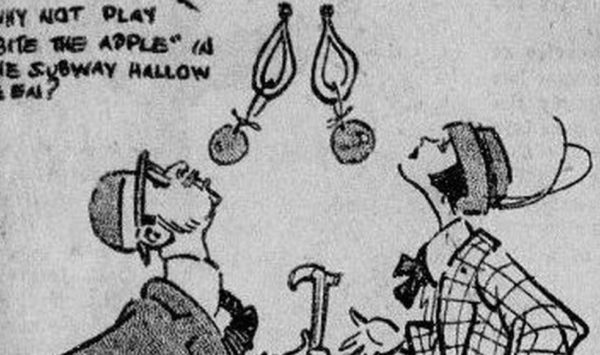
******************************************************************************************************************************** Brownstone Detectives investigates the history of our clients’ homes. The story you are about to read was composed from research conducted in the course of one of those investigations. Do you know the history of YOUR house? ******************************************************************************************************************************** Those of you who live in New York might have seen costumers on the subway during your commute today. It is less likely, though, that you saw straphangers bobbing for apples. At the time of this cartoon’s publication in the October 29th, 1922 edition of the New York Tribune, the subway was a mere 18-year-old. And the term “straphanger” was not much older – it derived from the (at first leather, and later metal) straps which hung from the ceiling of a street or subway car. “Why not play ‘bite the apple’ in the subway Halloween?”, shows two New Yorkers, a “dudish” man and an “artsy” woman (two typical subway riders of the day?) “bobbing” for apples from those straps. When was the last time you played this game??? Follow @BrownstoneDetec Share ———————————————————————————————————————– The Brownstone Detectives Brownstone Detectives is an historic property research agency. Our mission is to document and save the histories of our clients’ homes. From our research, we produce our celebrated House History Books and House History Reports. Contact us today to begin discovering the history of your home.
A BROOKLYN BLVD. BENEATH THE SEA (1910)
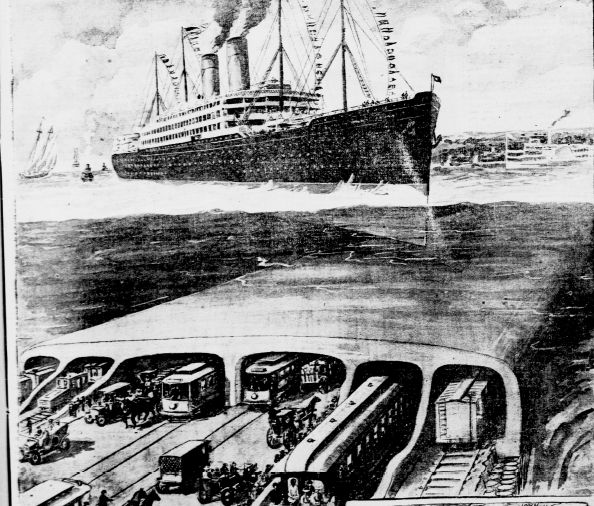
******************************************************************************************************************************** Brownstone Detectives investigates the history of our clients’ homes. The story you are about to read was composed from research conducted in the course of one of those investigations. Do you know the history of YOUR house? ******************************************************************************************************************************** Following the turn of the last century, after the Brooklyn Bridge had gone up connecting New York City to Brooklyn’s borough, the former “City of Homes and Churches,” as a direct result, started to experience phenomenal growth. By 1909 the Manhattan Bridge was opening to address the overflow of Brooklyn residents needing another way of getting in and out of Manhattan. This growth caused New York politicians to start thinking about a way to spur that same growth on Staten Island by establishing an easier way of moving between these two boroughs. Before talk of a bridge began, though, there was talk of a grand tunnel. Towards the end of the decade, that talk got more serious and front pages like the one above began to earnestly ask the question, “Just how will we travel between Brooklyn and Staten Island?” A tunnel gained early traction and the city’s commissioners began to look seriously at its feasibility. In the New York Tribune, it was posited that such a tunnel would keep our residents’ dollars within the city limits by restricting their ability to travel elsewhere and not letting them “get away to Jersey or Westchester.” “A tunnel 100 feet wide and 10,000 feet long,” the paper noted, “easy of approach at either […]
WHEN BROOKLYN’S SUBWAYS WERE CAVING IN
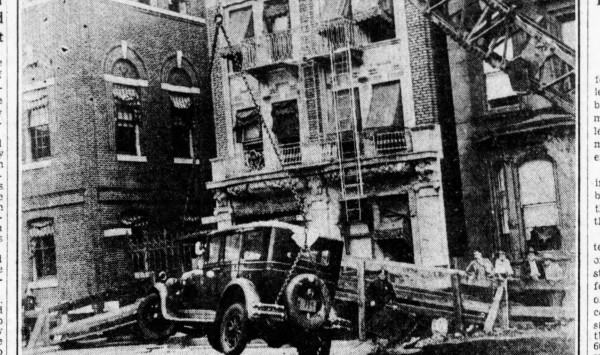
Back in the day, when subways were being dug throughout the city, cave-ins were a common occurrence. Very often these cave-ins were caused by water leakage or seepage, or heavy rains. As such, the City began to run drainage water in overhead tubes to keep the area near the subway digs in-tact. Follow @BrownstoneDetec ———————————————————————————————————————– The Brownstone Detectives The story you have just read was composed from historical research conducted by The Brownstone Detectives. It was uncovered during the extensive research that our clients commission us to perform on their historic homes, research which culminates in the production of one of our celebrated House History Books. If you are interested in discovering the history of your home, contact us today.
ATLANTIC TERMINAL – 1910 vs. 2018
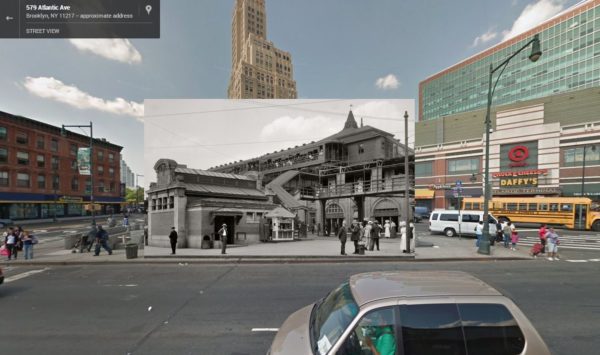
******************************************************************************************************************************** Brownstone Detectives investigates the history of our clients’ homes. The story you are about to read was composed from research conducted in the course of one of those investigations. Do you know the history of YOUR house? ******************************************************************************************************************************** We found a photograph taken at the “Atlantic Avenue subway entrance,” circa. 1910, and superimposed it onto an image taken from the same location, circa. today (courtesy Google Maps). The old picture shows an elevated railway and streetcar tracks in the background – the elevated railway is now underground and the streetcar has been replaced by city busses. If you look closely at the train cars, you can see that they are open on the sides, showing the time of year the photograph was taken. Also telling of the period (and the time of the year) are the boaters that the men are wearing – they were en vogue in mean’s spring/summer fashion at the time. There are also a couple of policemen, looking very much like London “bobbies” or “Keystone Cops” with their distinctive helmets. Notice anything else? Follow @BrownstoneDetec Share ———————————————————————————————————————– The Brownstone Detectives Brownstone Detectives is an historic property research agency. Our mission is to document and save the histories of our clients’ homes. From our research, we produce our celebrated House History Books and House History Reports. Contact us today to begin discovering the history of your home.
THE “BRIDGE & TUNNEL” CROWD (1903)
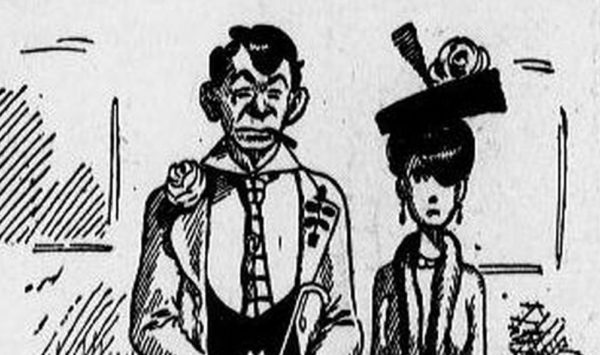
******************************************************************************************************************************** Brownstone Detectives investigates the history of our clients’ homes. The story you are about to read was composed from research conducted in the course of one of those investigations. Do you know the history of YOUR house? ******************************************************************************************************************************** In 1896, the “Bridge & Tunnel” hipster crowd took a giant leap forward. With the success of the Brooklyn Bridge – and its affect on the borough’s progress – long ago assured, construction on the Williamsburg Bridge had begun that year. Shortly after the bridge’s opening in 1903, though, the seriousness of the occasion passed, and the inevitable cartoons lampooning the “simple folk” of the outer boroughs would begin to appear. This cartoon was printed in The Evening World about a year after the opening – just long enough afterwards for the cartoonist – and everyone else who traveled the bridge on a regular basis – to have already become familiar with the “types” who crossed the bridge. It lampooned the “country mouse comes to the city” aspect of those suburbanites (rural dwellers, to those living in the city) from the outer borough of Brooklyn who were beginning at the time to patronize the offerings of the city through its novel and accessible rapid transit system. The cartoon also depicted the out-of-date dress and forced style of the Williamsburg “set.” Specifically, though, it represented the new access to the city that the commuters from the Eastern District of Brooklyn (read Williamsburg) then enjoyed due to the recent addition of the new […]